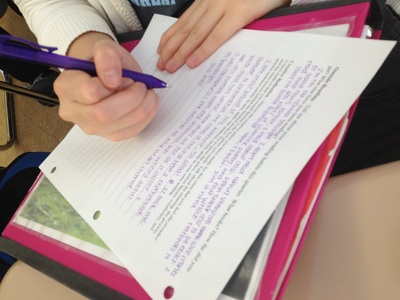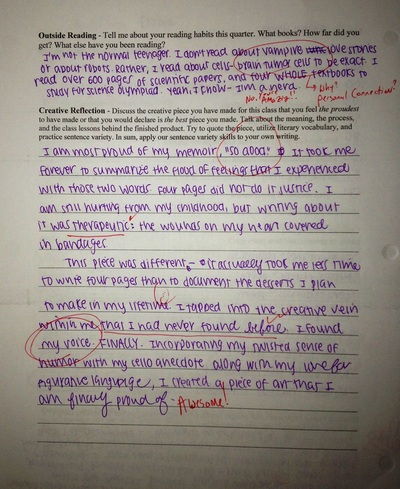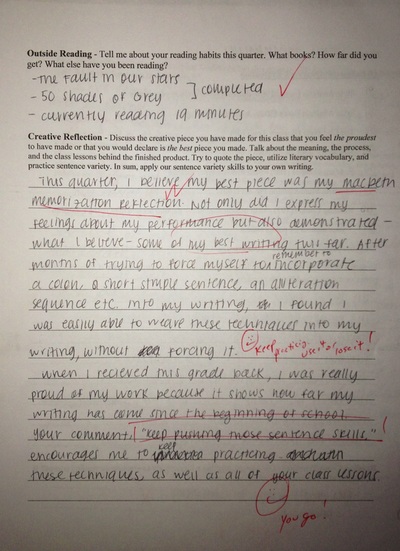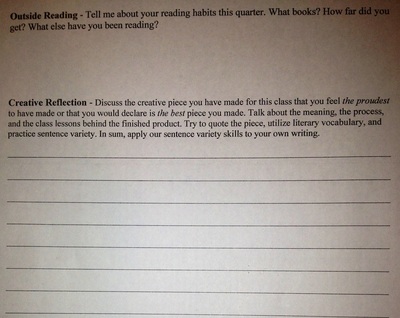Calculate, Reflect, Inquire, Goal Set
It is vital for students to see exactly how their grades are derived. I believe in a completely transparent method of determining what will go on their report cards.
My methods are so transparent, in fact, that I have the pupils tell me their grades!
This term, students first had to write in their assessment scores to figure out their numerical averages. It was a golden opportunity for them to see where they succeeded and where they need to improve.
Next, they had to list all of their creative accomplishments from the quarter. To get an "A" this term, students needed a 90+ average and they had to earn a "final" on 3 pages of memoir, 3 poems, 3 graphic arts pieces, and 1 calligram.
I am always setting goals and deadlines, then asking for reflections.
These techniques will motivate students through introspection, self-reflection, and writing!
This goal would never be "assessed" in a traditional way and it wasn't homework, per se. I taught them how to improve at this skill -- while applying the moderate pressure of knowing that in two months I would ask them about these meetings. There would be no bonus for having reading comp sessions and no detraction for not meeting up with anybody. It was simply a goal of the class.
It is REMARKABLE what students will do even when there is no formal grade on the line.
Creative Reflection: The quarterly self-analysis ends with a longer reflection on either reading or writing. This time I asked about a creative piece that made them proud. I might ask about the theme of a book they read, a writing lesson they've learned, or any number of other related items.
The quarterly self-analysis is a critical summary of what each student achieved during the marking period, and I cannot fill out their report cards without them.
I encourage you to try some of the same methods!
Click here to download the handout I used.














 RSS Feed
RSS Feed